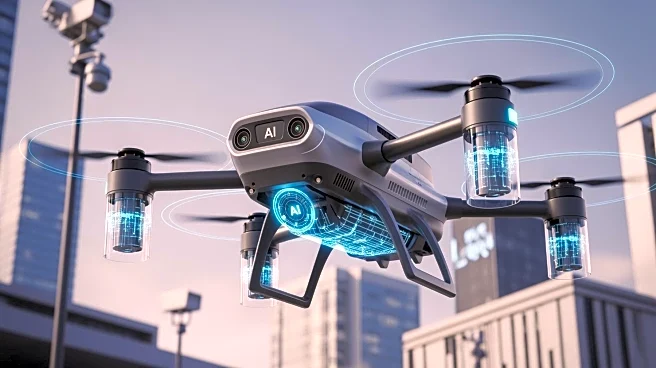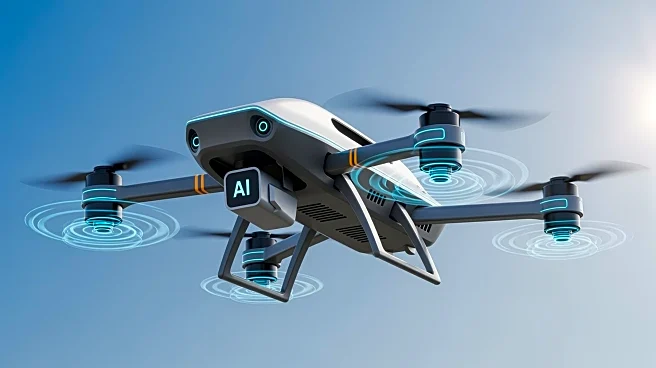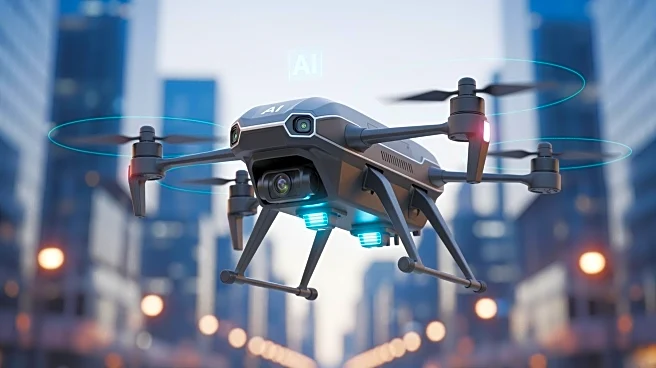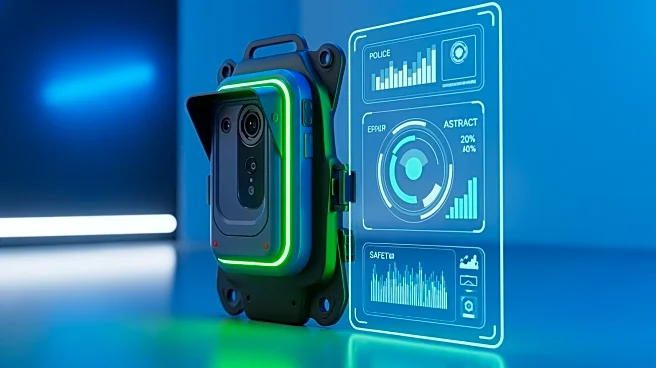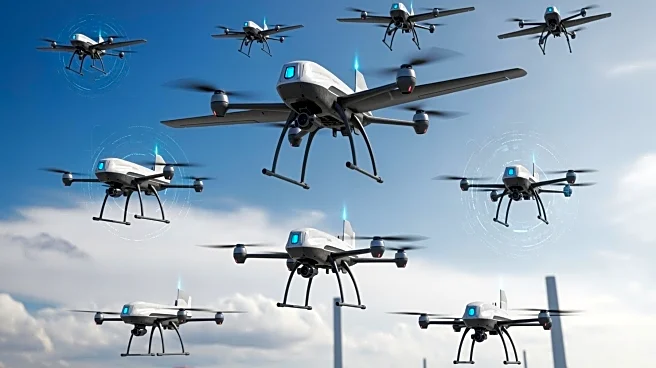What's Happening?
ZeroEyes, a Pennsylvania-based company known for its gun detection technology, has introduced its ZeroEyes Aerial Detection Kits (ZAD) through its subsidiary ZE Government Solutions. These kits are designed
to enhance public safety by providing a portable, drone-based AI threat detection and situational awareness solution. The ZAD software offers a live camera feed capable of identifying firearms, vehicles, boats, other drones, and people. This technology aims to address the challenges of protecting outdoor spaces, which are vulnerable to unauthorized access and potential gun-related violence. ZeroEyes' new product is intended to assist law enforcement in managing event and perimeter security, armed suspect situations, searches, barricades, hostage scenarios, and domestic disputes.
Why It's Important?
The introduction of AI-driven drone solutions by ZeroEyes represents a significant advancement in law enforcement technology. By providing real-time threat detection and situational awareness, these drones can enhance the effectiveness of public safety agencies in preventing and responding to incidents. This technology could lead to improved security measures in outdoor spaces, reducing the risk of gun-related violence and unauthorized access. The deployment of such drones may also influence the broader public safety sector, encouraging other companies to develop similar technologies. As law enforcement agencies adopt these solutions, they may experience increased efficiency and accuracy in threat detection and response.
What's Next?
As ZeroEyes rolls out its drone solutions, law enforcement agencies may begin integrating these technologies into their operations. This could involve training personnel to effectively use the drones and software, as well as establishing protocols for their deployment in various scenarios. The success of ZeroEyes' products may prompt further innovation in AI-driven security solutions, potentially leading to new applications in other sectors. Additionally, the adoption of these technologies may spark discussions on privacy and ethical considerations related to surveillance and data collection.
